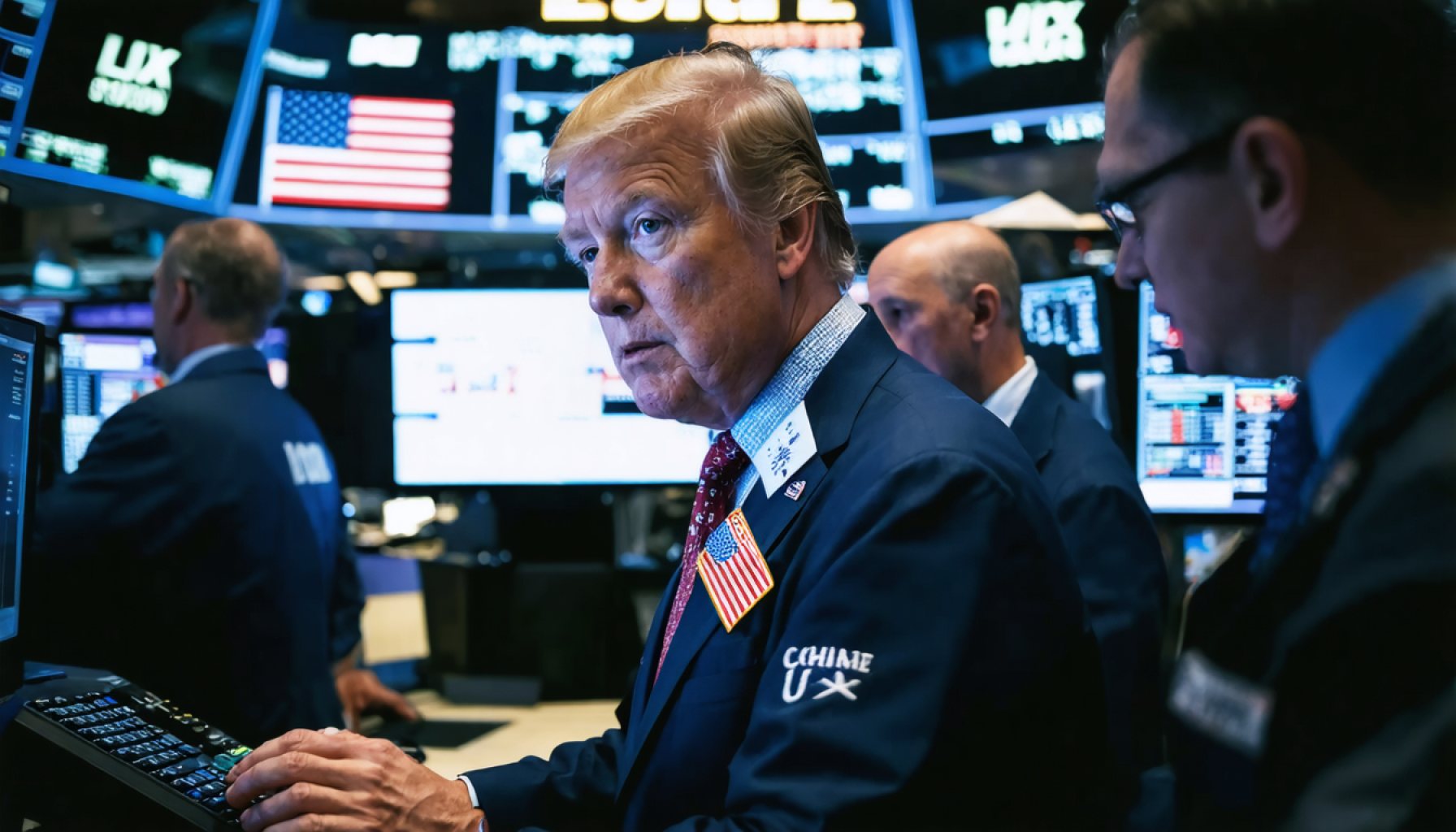- U.S.-China tensions escalated as Beijing imposed a 125% tariff on American imports, igniting significant market turbulence.
- The S&P 500 index fell by 0.7%, the Dow Jones Industrial Average dropped 306 points, and the Nasdaq declined 0.4%, reflecting investor anxiety.
- Stocks faced renewed uncertainty as earlier gains due to a partial tariff reprieve were overshadowed by rising economic tensions.
- The price of gold increased, indicating a shift towards safe-haven assets amidst instability, while the U.S. dollar weakened slightly.
- The situation highlights the fragility of global trade relations and the importance of resilience, resolution, and compromise in economic negotiations.
- The ongoing trade dispute underscores the vital interdependence of international commerce, with global markets watching closely for a peaceful resolution.
The morning sun struggled to shine over Wall Street on Friday. Markets felt the tremors of a trade war quake, leaving investors clutching onto their seats. As the day unfolded, the familiar hustle of Manhattan’s financial district seemed to slow under the weight of a heavyweight clash—U.S.-China tensions reached fever pitch as Beijing announced a jaw-dropping 125% tariff on American imports.
The ripple effect was swift and undeniable. Like dominos standing against a potent wind, the major indexes wavered, tipping into a downward spiral. The S&P 500, a barometer of corporate health, slid by 0.7% within the first strokes of trading. The Dow Jones Industrial Average, often romanticized as the heartbeat of the American economy, dropped a staggering 306 points, while the tech-laden Nasdaq composite shed 0.4%.
Once the darlings of Wall Street, stocks felt the chill of uncertainty. Investors, who were just beginning to savor mid-week gains following a tariff reprieve by President Trump on countries other than China, now faced the cold, harsh reality of renewed economic tension. The soothing balm of paused tariffs was quickly overshadowed by the storm clouds of escalating tariffs.
The broader financial landscape reflected the day’s unease, casting long shadows on the prospects of a peaceful trade resolution. The price of gold, a traditional safe haven in rocky times, gleamed ever brighter, embodying the rising fear and financial trepidation. The U.S. dollar staggered slightly, its fall suggesting investor skepticism about short-term stability.
Meanwhile, the Dow Jones began its rocky journey at 39,493.42 points, down slightly by 100.2 points—a modest drop that belied the furtive glances of traders watching massive monitors, eyes darting between losses and hopes for recovery.
In these times of tension, the tightrope walk of global trade has never seemed more precarious. The dance between two economic titans—each maneuvering, each countering—underscores a crucial truth: in trade, as in life, resilience is paramount, but resolution and compromise remain the ultimate goals.
Amidst the market blues and economic chess games, a clear takeaway emerges: the enduring lessons of the past remind us of the delicate interdependence of global commerce. As both nations return to the table, anxious eyes worldwide hope for calm seas beyond the storm.
Trade War Shockwaves: How U.S.-China Tariffs Are Shaking Wall Street
Understanding the U.S.-China Trade War’s Impact on Markets
Market Reactions and Predictions
The recent escalation of the U.S.-China trade tensions, with Beijing’s implementation of a 125% tariff on American imports, has led to notable market volatility. This rise in tariffs has had immediate repercussions across major stock indexes like the S&P 500, the Dow Jones Industrial Average, and the Nasdaq Composite, causing them to plummet. This tension disrupts not only the stock market but also shakes investor confidence globally.
What are the Driving Factors?
– Tariffs and Trade Barriers: The implementation of tariffs acts as a trade barrier, increasing the cost of goods and reducing the flow of goods between nations.
– Investor Sentiment: The trade war escalates uncertainty, causing investors to become risk-averse, shifting their portfolios towards safer investments like gold.
– Economic Indicators: The trade war affects economic indicators such as exchange rates and corporate earnings, which are vital in predicting market trends.
Key Questions Answered
– Why did the Chinese government impose a 125% tariff?
This move is generally a retaliatory response to U.S. trade policies perceived as unfair by China, part of the ongoing economic tit-for-tat between the world’s two largest economies.
– How do trade wars affect the average investor?
Trade wars increase market volatility, which can reduce the value of investments. Investors may also see diminished returns as companies contend with higher costs and reduced pricing power.
Pros & Cons of Current Market Conditions
– Pros:
– For Gold Investors: The rise in gold prices represents a potential increase in returns for those having invested in this safe haven.
– Technology & Innovation: Escalating tensions may spur innovation as companies seek to reduce dependency on foreign inputs.
– Cons:
– Market Volatility: Significant fluctuation in stock prices and indices poses risks to portfolios.
– Global Uncertainty: Prolonged tensions may lead to long-term negative impacts on global trade and cooperation.
How to Navigate Turbulent Markets
1. Diversify Investments: Reduce risk by spreading investments across various industries and asset types.
2. Keep Informed: Stay updated on trade policies and market reactions through credible resources like Reuters or Bloomberg.
3. Focus on Long-Term Gains: Avoid rash decisions based on daily market shifts; instead, maintain a long-term investment perspective.
Future Outlook: Industry Trends and Predictions
– AI and Automation: Companies are likely to increase investment in AI and automation to mitigate the impacts of labor costs and supply chain disruptions.
– Emerging Markets: As tensions rise, businesses might pivot to emerging markets to diversify their trade and manufacturing bases.
Conclusion: Quick Tips
– Keep a close watch on economic policies and trade agreement developments to anticipate market shifts.
– Ensure a balanced portfolio to hedge against different economic scenarios.
Staying informed and strategic is crucial during these periods of economic uncertainty. Remember, while market downturns can be alarming, they often present opportunities for informed and prepared investors.
